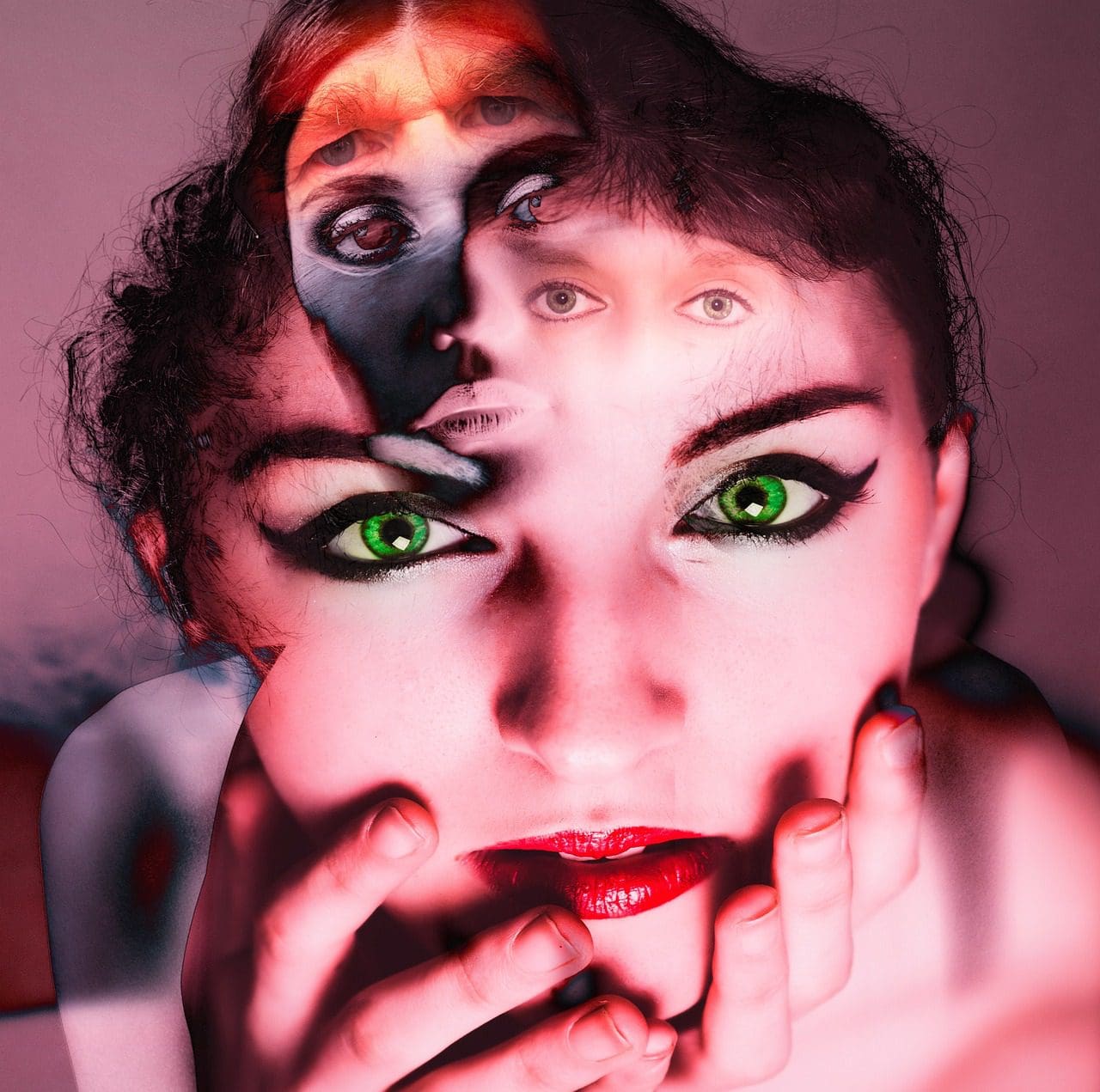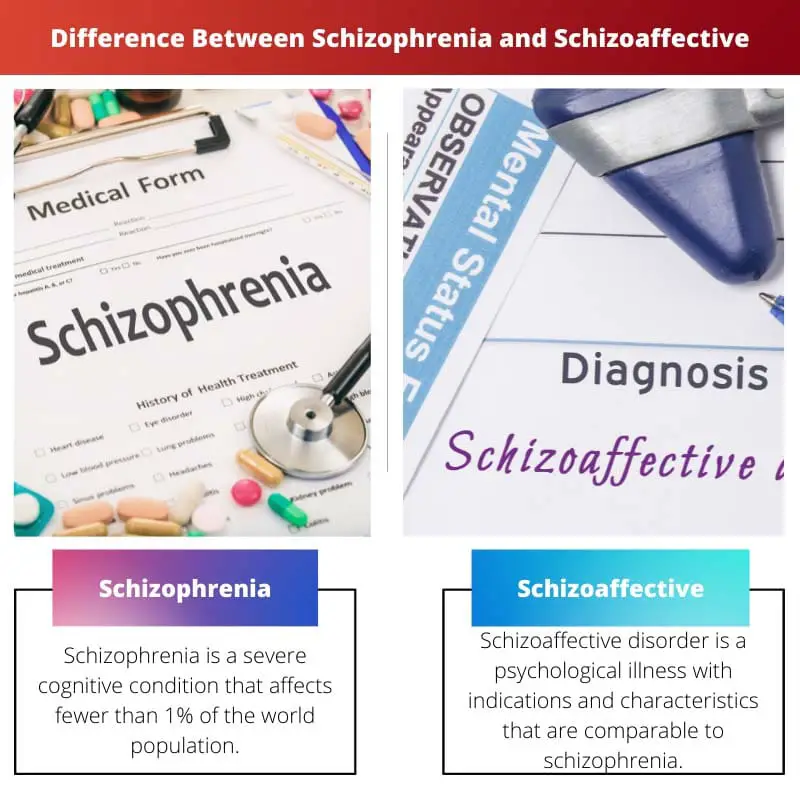With the various types of psychological and physiological disorders that humans face, psychiatric conditions are one of the most fascinating topics on which humans may reflect and research. Multiple causes and explanations exist for various or even a single mental illness.
People who struggle to comprehend the signs of possibly mental or psychological illness may feel overwhelmed. A mental disorder is diagnosed by physicians, psychiatrists, and other mental health experts.
Meanwhile, this article will try to differentiate between the facts and symptoms of two such disorders, namely schizophrenia and schizoaffective disorders, to have a better understanding and comprehension.
Key Takeaways
- Schizophrenia is a mental disorder characterized by hallucinations, delusions, and disordered thinking, while schizoaffective disorder includes symptoms of schizophrenia and a mood disorder.
- Schizoaffective disorder is diagnosed when mood disorder symptoms are present for a substantial portion of the illness, whereas schizophrenia does not involve mood episodes.
- Treatment for schizoaffective disorder includes both antipsychotic medications and mood stabilizers, while schizophrenia is primarily treated with antipsychotic medications.
Schizophrenia vs Schizoaffective
Schizophrenia is a psychological disorder characterized by delusions, hallucinations, and, at times, feeling detached from reality. It causes cognitive disabilities. Schizoaffective disorder is a psychological disorder characterised by schizophrenic symptoms along with mood disorders such as mania or depression.

Schizophrenia is a mental illness that affects the way people think. It originated from the Greek terms “schizein,” which means “to split,” and “phren,” which means “thought.” Eugene Bleuler coined the phrase in 1908.
This term was developed by him to explain the division of the mind’s reasoning, memory, identity, and awareness. Delusions, flashbacks, anxiety, disordered speech, and disorganized thinking are indicators and symptoms.
Schizophrenia is commonly referred to as “becoming insane.” Schizoaffective disorder, on the other hand, is a very rare disorder that clubs the mental and emotional vulnerability of a person to flash in hallucinations, severe mood and temperament swings, and a sense of distrust and disturbed thought process.
Untreated schizoaffective illness can cause issues at work, college, and in social interactions, resulting in isolation and difficulty keeping down a full-time job or going to the university or any social gathering.
People who suffer from schizoaffective disorder may require humanitarian help in their daily lives. Therapy can aid in the management of symptoms and the enhancement of one’s standard of living.
Comparison Table
| Parameters of Comparison | Schizophrenia | Schizoaffective |
|---|---|---|
| Definition | Schizophrenia is a severe cognitive condition that affects fewer than 1% of the world population. | Schizoaffective disorder is a psychological illness with indications and characteristics that are comparable to schizophrenia. |
| Symptoms | Psychological instability, delusions and hallucinations. | Delusions, severe mood swings, distressful thoughts and hallucinations. |
| Treatment | DSM methodologies and antidepressant drugs | DSM methodologies along with continual psycho-therapy. |
| Discovery | Schizophrenia was first identified in 1908. | Schizoaffective illness was identified in 1933. |
| Age Group | 20 to 30 years old (onset window) | 25 – lifelong (incurable) |
What is Schizophrenia?
Schizophrenia is a severe cognitive condition that affects fewer than 1% of the world population. Psychotic symptoms of schizophrenia do overlap with schizoaffective disorder, and sometimes it becomes difficult for the therapist to figure out the disorder differences due to similar cognitive disabilities and symptoms too.
General schizophrenia symptoms involve hallucinations, seizures, disordered speech, difficulty thinking, and a lack of willingness. Most initial symptoms can be substantially improved with therapy, and the risk of relapse can be reduced.
The term ‘schizophrenia’ originated from the Greek terms “schizein,” which means “to split,” and “phren,” which means “thought.” Eugene Bleuler coined the phrase in 1908.
This term was developed by him to explain the division of the mind’s reasoning, memory, identity, and awareness. When talking about mortality rates and statistics from the past couple of years, men and women are equally affected by schizophrenia, according to findings, although men may get it sooner.
Percentages are comparable all over the world. Schizophrenics are more likely than the general population to die early. Schizophrenia is evaluated using the DSM standards, which are used by psychologists and psychiatrists to validate a patient’s diagnosis.
Although there is no particular cure for schizophrenia, it may be managed with medicines, notably atypical antipsychotics like Risperidone.
There are numerous ideas on what causes schizophrenia, including genetics and the possibility that illness runs in the family.

What is Schizoaffective?
Schizoaffective disorder is a psychological illness with indications and characteristics that are comparable to schizophrenia. Jacob Kasanin, an American psychologist, was the first to notice it in a patient in the year 1933.
These have many of the same symptoms as schizophrenia patients, as well as some of the same characteristics as bipolar individuals and autism patients, such as high and low emotions.
Approximately 0.3 percent of the population suffers from schizoaffective disorder. Men are more likely than women to acquire schizoaffective disorder.
A major temperament flush or mood swing for at least a two to three-week interval of psychotic disorders when a severe mood episode is not occurring are diagnostic characteristics of schizoaffective disorder or paranoid schizoaffective disorder. However, the genesis and duration of the illness may vary.
Finally, since they exhibit social seclusion, strange conduct, and unorthodox thought processes, they are equated to autistic children and adults with schizotypal personality disorder.
Someone with schizoaffective disorder can talk about death or engage in suicidal conduct. If you have a close one who is feeling suicidal or has already attempted suicide, make sure someone remains with them.
This occurs because patients affected by schizoaffective disorder are always delusional, and their subconscious thought process overlaps with their conscious thinking processes.

Main Differences Between Schizophrenia and Schizoaffective
- Schizophrenia can be cured in the early stage of diagnosis, but schizoaffective disorder can never be completely treated.
- Schizophrenia has psychological syndromes which occur in regular intervals, but schizoaffective disorder symptoms are unpredictable and non-curable.
- Schizophrenia is more common in people than schizoaffective disorder.
- Schizophrenia occurs in people aging from 20 to 30, whereas schizoaffective disorder can overlap with other mental disorders like autism and ranges from age 25 to over.
- Schizophrenia was first identified in 1908, whereas schizoaffective illness was identified in 1933.


This article presents a very pertinent overview of schizophrenia and schizoaffective disorder, effectively addressing the complexities of these conditions.
Thank you for demystifying these mental health conditions and offering a clear, logical comparison. Your contribution to mental health education is invaluable.
Absolutely, the dedication to this level of detail highlights a sincere commitment to truly understanding and addressing these disorders.
It’s quite a commendable resource indeed. Such detailed insights pave the way for greater awareness and empathy.
The article’s detailed analysis is a testament to the commitment to further understanding complex mental health conditions, offering a beacon of hope in the field of psychiatry.
Indeed, the depth of research and clarity of information here paves the way for meaningful progress in the field.
A very thorough and thought-provoking piece that contributes significantly to the discourse on mental health conditions.
The comprehensive nature of this article serves as a cornerstone for enhanced understanding of psychiatric disorders, eliminating uncertainty and fear.
Absolutely. It’s a refreshing departure from partial information and misconceptions.
It’s truly captivating how much we still have to learn about psychiatric conditions and their treatment. Your article is a great resource for those who seek to understand these disorders better.
Indeed! The more details we gather, the better the chances of arriving at effective interventions. Science is an ever-evolving field.
This piece sheds light on the critical differences between schizophrenia and schizoaffective disorders, providing factual information to help dispel misconceptions.
Absolutely, the clarity here is very refreshing. Knowledge is key to reducing stigma surrounding mental health.
The tone of this article is deeply informative and allows for an insightful comparison that could be pivotal in aiding the understanding of these disorders.
I couldn’t agree more. The detailed comparison of symptoms and treatment approaches is incredibly helpful.